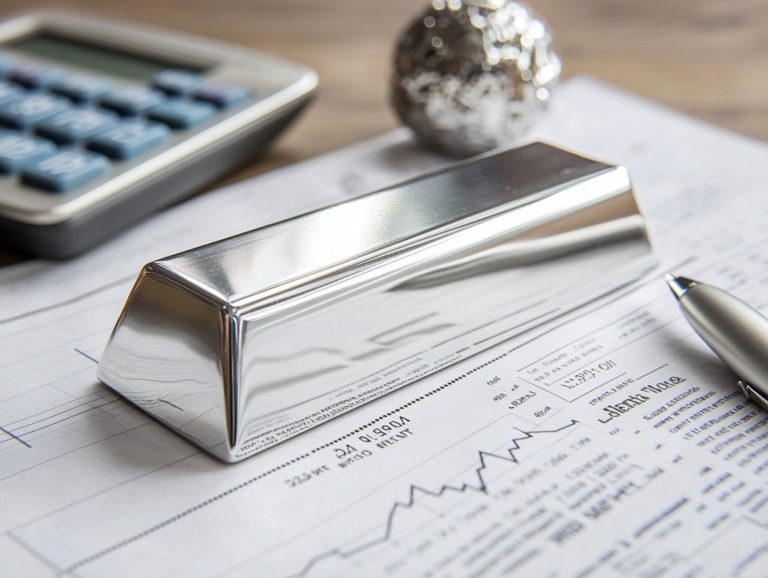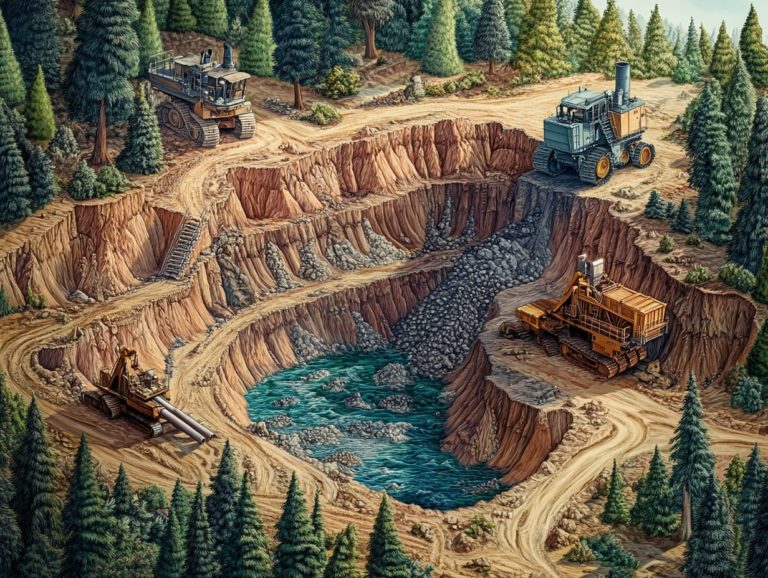Palladium Prices: Historical Trends and Future Outlook
Palladium is a precious metal that has recently gained attention, especially for its importance in the car industry and other sectors. Investors and enthusiasts alike are intrigued by its value and potential.
Understanding its price movements is vital, as various factors influence its worth. Let s explore the basics of palladium, looking at its historical trends shaped by key events and analyzing the current dynamics of supply and demand.
As you look ahead, expert predictions and potential risks will be highlighted, providing valuable insights for making informed decisions.
Contents
- Key Takeaways:
- Understanding Palladium Prices
- Historical Trends of Palladium Prices
- Overview of the Palladium Market Today
- Future Outlook for Palladium Prices
- Frequently Asked Questions
- What has been the historical trend of palladium prices?
- What factors influence the price of palladium?
- What is the future outlook for palladium prices?
- How does palladium compare to other precious metals?
- How can I track palladium prices?
- What are the potential risks associated with investing in palladium?
Key Takeaways:

- Palladium is a precious metal used in various industries, including automotive and jewelry. Its prices are heavily influenced by global demand and supply, as well as economic and political factors.
- Historically, palladium prices have been volatile due to geopolitical events, economic downturns, and regulatory changes. However, recent trends indicate a steady increase in demand, leading to higher prices.
- The future outlook for palladium prices appears positive, with experts predicting continued growth in demand and prices due to the metal s increasing use in new technologies and stricter emission standards for vehicles.
Understanding Palladium Prices
Grasping the nuances of palladium prices is essential for investors looking to master the intricate world of precious metals. With demand for palladium climbing across sectors, including the growing market for electric vehicles (EVs), staying informed is crucial.
The pricing dynamics of palladium are shaped by several factors, including supply limitations from major producers like South Africa and Russia. Demand is also influenced by the car industry and cutting-edge technology.
What is Palladium?
Palladium is a precious metal that has gained prominence in recent years, especially in the car industry where it plays a crucial role in catalytic converters, devices that help reduce harmful emissions from cars.
Its utility extends to electronics, fine jewelry, and dental composites due to its remarkable durability and corrosion resistance. The demand for palladium has surged as car manufacturers strive to comply with stringent environmental regulations, resulting in limited supply that boosts its market value.
Investors recognize palladium’s potential as a safe-haven asset, especially during uncertain economic times. Its ability to retain or even appreciate in value makes it an appealing addition to any well-rounded investment portfolio.
Factors Affecting Palladium Prices
Several factors significantly influence palladium prices. Supply constraints from major producers like South Africa and Russia, coupled with rising demand from the car industry driven by strict emission regulations, play a crucial role.
The balance between these elements creates a complex web of dynamics. Geopolitical tensions can further disrupt production or distribution, sending ripples through the market.
Emerging trends, such as increased investment in electric vehicles, are reshaping traditional consumption patterns and prompting industry stakeholders to rethink their strategies.
Supply chain disruptions whether from environmental factors or labor disputes can also increase price volatility. Fluctuations in currency values impact the costs associated with palladium trading and investment, making the landscape even more intricate.
Historical Trends of Palladium Prices
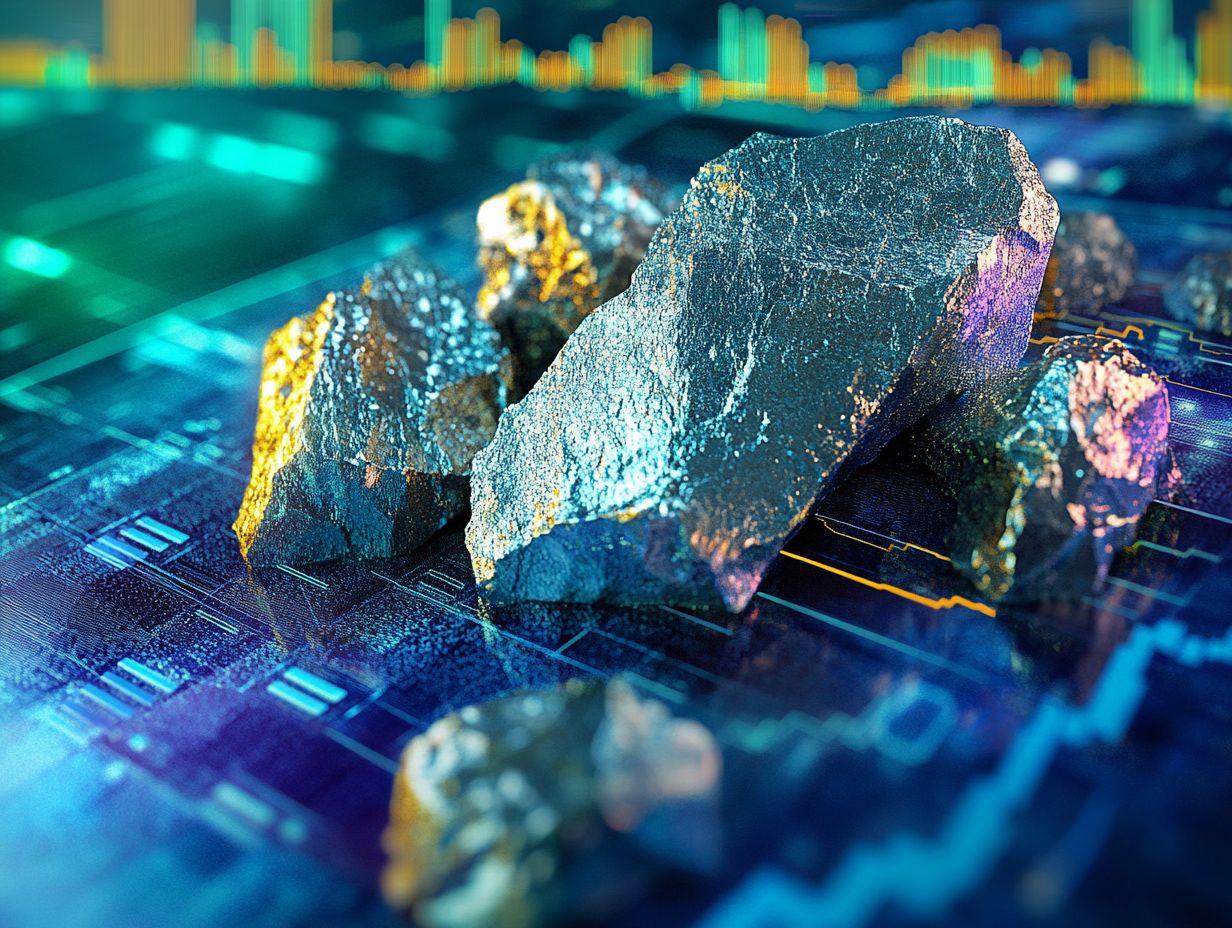
Over the past two decades, palladium prices have shown significant volatility. These fluctuations reflect evolving market dynamics influenced by events ranging from economic downturns to technological advancements and shifts in the car industry’s demand for palladium.
Stay informed and consider how palladium could fit into your investment strategy!
Key Events and Influences on Prices
Key events, such as political conflicts and supply disruptions in major producing countries, along with emerging technologies like cryptocurrency mining, have significantly influenced palladium prices. This has led to notable market fluctuations.
These fluctuations reflect underlying shifts in global demand and supply dynamics, particularly in regions like Russia and South Africa, which are crucial for palladium production. For instance, political unrest or sanctions can sharply limit exports, creating tight supply conditions that push prices higher.
The surge in automotive industry demand for palladium has been a major force during economic recoveries. The recent rise of alternative technologies, including advancements in electric vehicles, has introduced a complex interplay between supply and demand, adding further layers of complexity to the outlook for this precious metal.
Overview of the Palladium Market Today
The current state of the palladium market presents a nuanced equilibrium between supply and demand. Prices reflect the ongoing challenges in sourcing palladium from pivotal regions, such as Russia and South Africa.
At the same time, the market must cater to the strong demand driven by the automotive sector.
Supply and Demand Dynamics
The supply and demand dynamics of palladium are intricately influenced by the auto sector’s growing appetite for cleaner technologies. This is combined with supply constraints driven by geopolitical factors in producing countries.
As automakers shift towards more environmentally friendly vehicle production, the pressing need for palladium in devices that reduce harmful emissions highlights its crucial role in this transition. Market fluctuations are significantly swayed by external elements like regulatory changes, trade tensions, and mining disruptions in key regions.
These complexities create price volatility and affect how available palladium is in the market. This creates a delicate balance that stakeholders must navigate carefully.
To truly grasp these market trends, it’s essential to understand how these multifaceted influences converge. This affects not just automotive manufacturers but the entire supply chain that relies on this precious resource.
Future Outlook for Palladium Prices
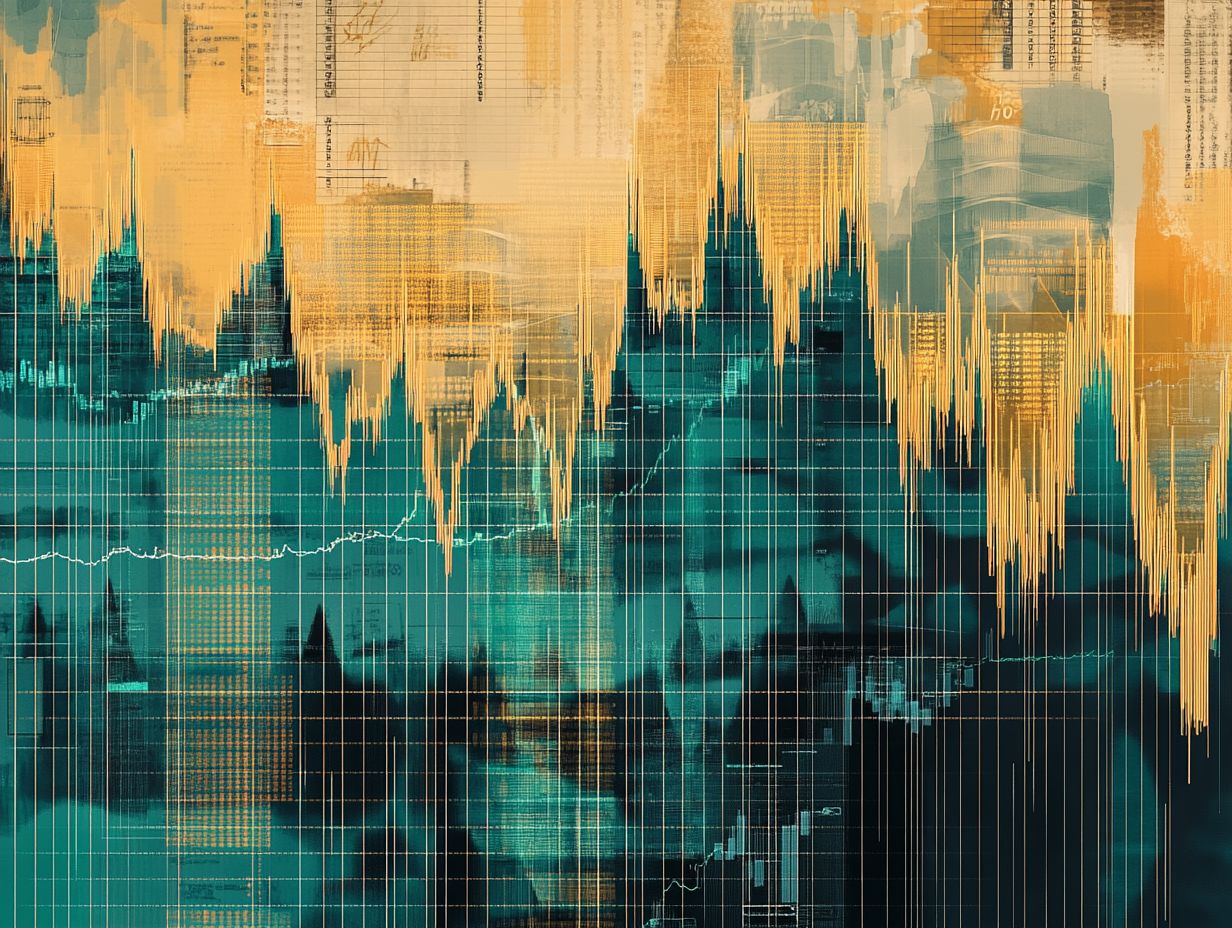
The future outlook for palladium prices captivates investors! Expert predictions present a spectrum of scenarios shaped by market trends, technological advancements in electric vehicles, and shifting regulations within the automotive sector.
This dynamic landscape invites you to consider the potential impacts on your investment strategy. The interplay of these factors will likely play a crucial role in determining the direction of palladium’s value.
Expert Predictions and Forecasts
- Some experts maintain a bullish outlook, driven by enduring demand from the automotive sector.
- Others raise caution about potential market corrections.
These differing perspectives highlight the intricate factors influencing palladium’s path. The ongoing transition to electric vehicles and stricter emissions regulations may keep demand for palladium strong, particularly in catalytic converters essential for curbing harmful emissions from traditional combustion engines.
On the flip side, a downturn in global manufacturing or a shift in investor sentiment could lead to price volatility. Keep an eye on geopolitical developments, economic trends in major players like China and the United States, and mining production levels! Each of these elements could significantly impact the outlook for palladium prices in the months ahead.
Potential Risks and Opportunities
You should be keenly aware of both the risks and opportunities that come with investing in palladium. Market trends can shift in the blink of an eye due to economic changes and emerging technologies, presenting both threats and avenues for growth.
The dynamic nature of the global economy plays a crucial role in determining the value of this precious metal. Palladium has experienced significant fluctuations, swayed by factors like industrial demand, geopolitical tensions, and supply chain disruptions.
Advancements in technology, especially in the automotive sector where palladium is integral for catalytic converters, create an ever-evolving landscape for you as an investor. As the market navigates these complexities, understanding the underlying trends will enable you to seize potential upsides while remaining vigilant about the inherent price swings associated with palladium investments.
Frequently Asked Questions
What has been the historical trend of palladium prices?
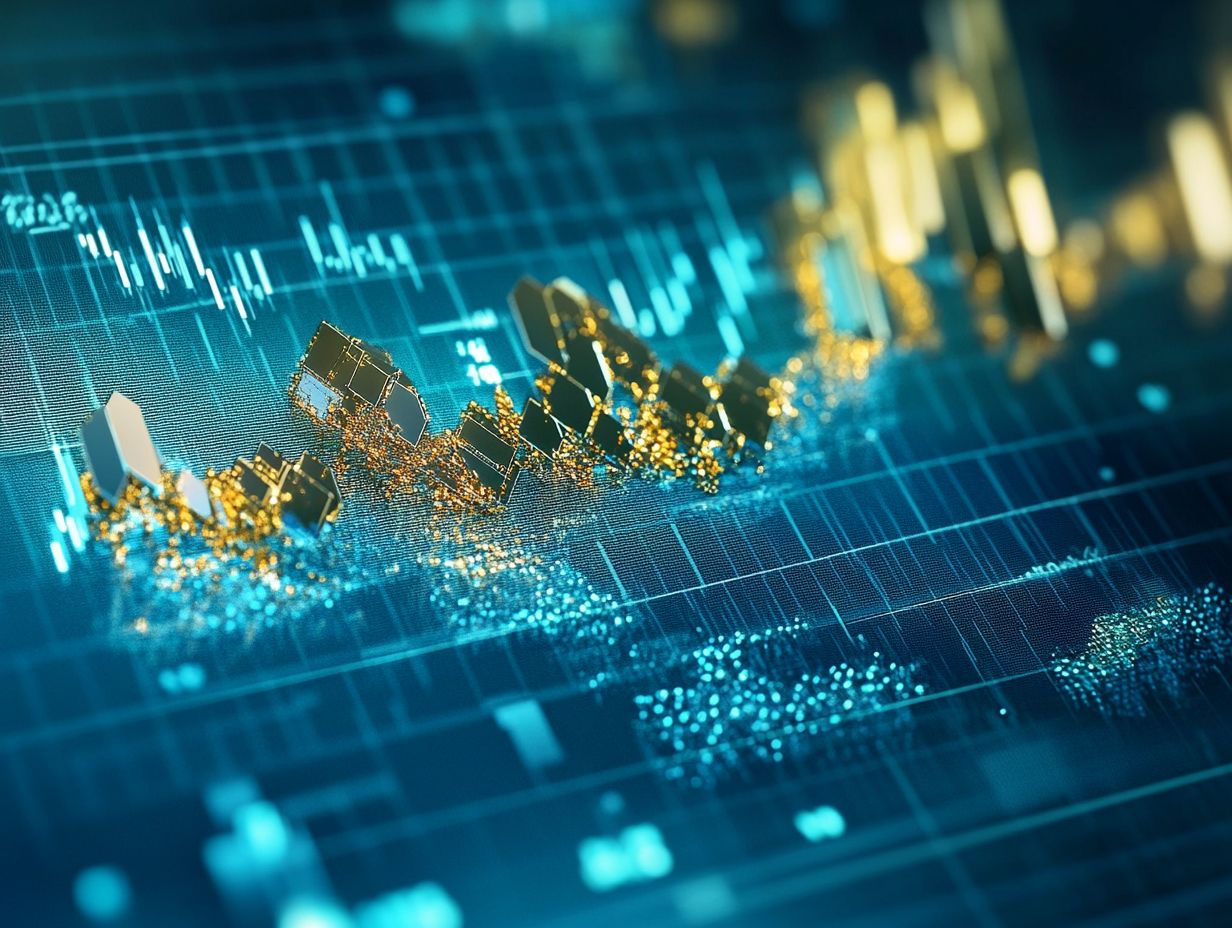
The historical trend of palladium prices has been largely volatile. The metal experienced a significant boom in the early 2000s, with prices reaching an all-time high in 2008. However, the 2008 global financial crisis caused a sharp decline in prices, followed by a slow and steady recovery until 2019.
What factors influence the price of palladium?
- Supply and Demand: The primary factor influencing palladium prices, especially due to its use in automotive catalytic converters.
- Economic Conditions: Market performance and economic stability can greatly impact prices.
- Geopolitical Events: Global tensions and conflicts can affect supply chains and market sentiment.
- Investor Sentiment: Market perceptions can lead to price fluctuations.
What is the future outlook for palladium prices?
Exciting times are ahead for palladium prices as demand is set to rise due to stricter emissions regulations in the automotive industry. However, the supply of palladium is limited, which could lead to further price increases in the future.
How does palladium compare to other precious metals?
Palladium is often compared to other precious metals such as gold and platinum. While it has historically been less expensive than gold and platinum, its recent price surge has made it the most valuable of the three. However, it is still considered a more affordable alternative to platinum, which is also used in catalytic converters.
How can I track palladium prices?
- Palladium prices are typically reported on financial news websites.
- You can track prices through commodity exchanges like the London Metal Exchange and the New York Mercantile Exchange.
- Various apps and websites provide real-time updates on palladium prices.
What are the potential risks associated with investing in palladium?
Investing in palladium carries significant risks that you need to be wary of! The metal’s volatile nature can lead to sudden price fluctuations, resulting in significant losses for investors. Changes in regulations or technological advancements may impact future demand for palladium.
Conclusion: Understanding the risks and opportunities in palladium investment is crucial. With potential for growth alongside inherent volatility, being informed can help you navigate this dynamic market effectively.










